The Dyke Worker
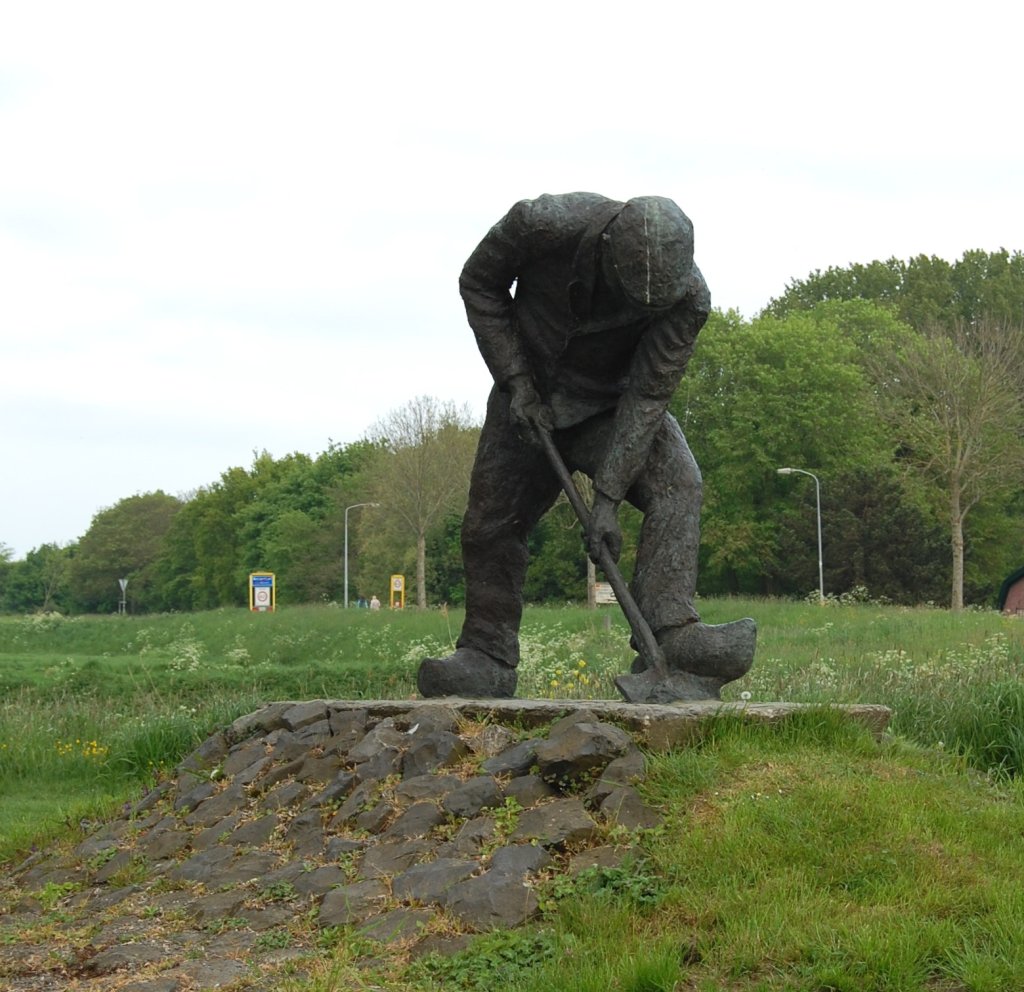
When the Omringdijk was completed is not known exactly, but at the latest in the thirteenth century. Many generations of dike workers created and preserved the dike with shovel and wheelbarrow. The statue The Dike Worker, created by Jan van Velzen, commemorates their important efforts. "Thanks to all the workers of the past for their fight against the water," the plaque reads. And so it is. If it weren't for them, we wouldn't be standing here.
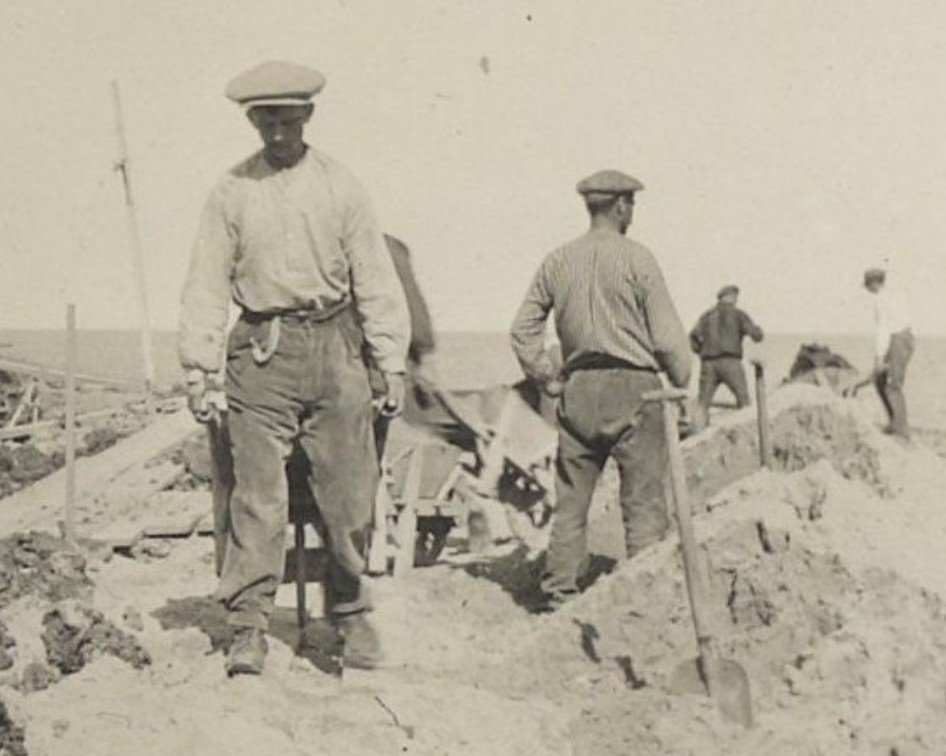
The Omringdijk originated from individual dikes. There was no "project Omringdijk" from on high. There was no central authority for that in West Friesland. Everywhere, farming communities erected low dikes to protect their land.
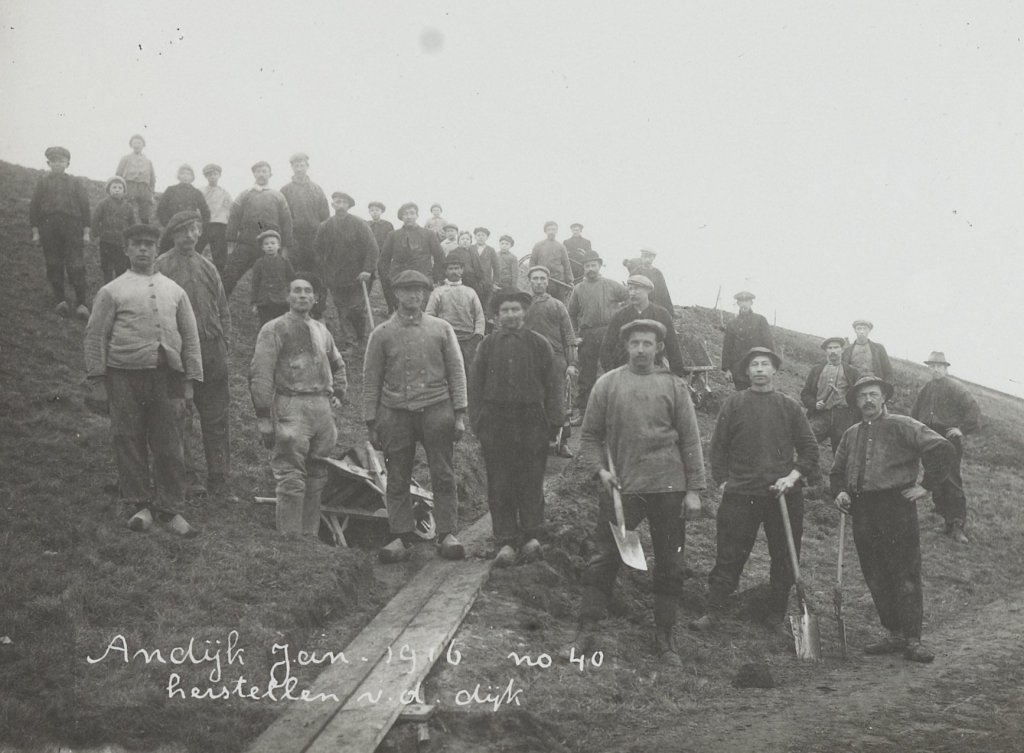
Everything involved in building or repairing the dike was human work: from digging to dumping and even hauling by wheelbarrow or carrier. Peat, manure, clay and household waste - it all came in handy. Construction, maintenance and repair of the dike was done by the farmers themselves. Each farmer had been assigned a piece of dike by the water board to maintain.

The dike to be maintained by farmers was lower than today. Consequently, it was not directly on the sea. There was land in front of it that served to break the waves. The society of the time lacked the resources and organization to build a high, strong dike. Over the centuries, the land sank below sea level. The sea gained ground and swallowed up more and more of the foreland. In the long run, there was no alternative but to create new foreland. To this end, a new dike was built inland, a so-called inlay dike. A large part of the current route of the Omringdijk consists of inland dikes (blue on the Map).
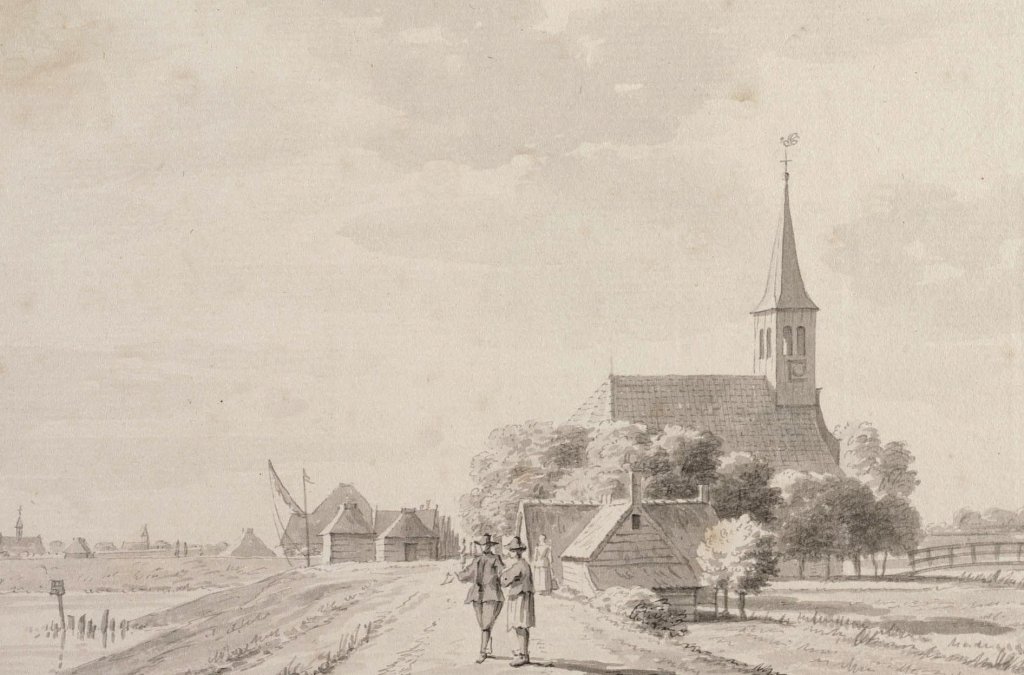
Maintenance by farmers had drawbacks. They lacked time and expertise to make a high, stable dike. Moreover, not everyone took the maintenance of their dike section equally seriously. Such negligence by some farmers could have major consequences.
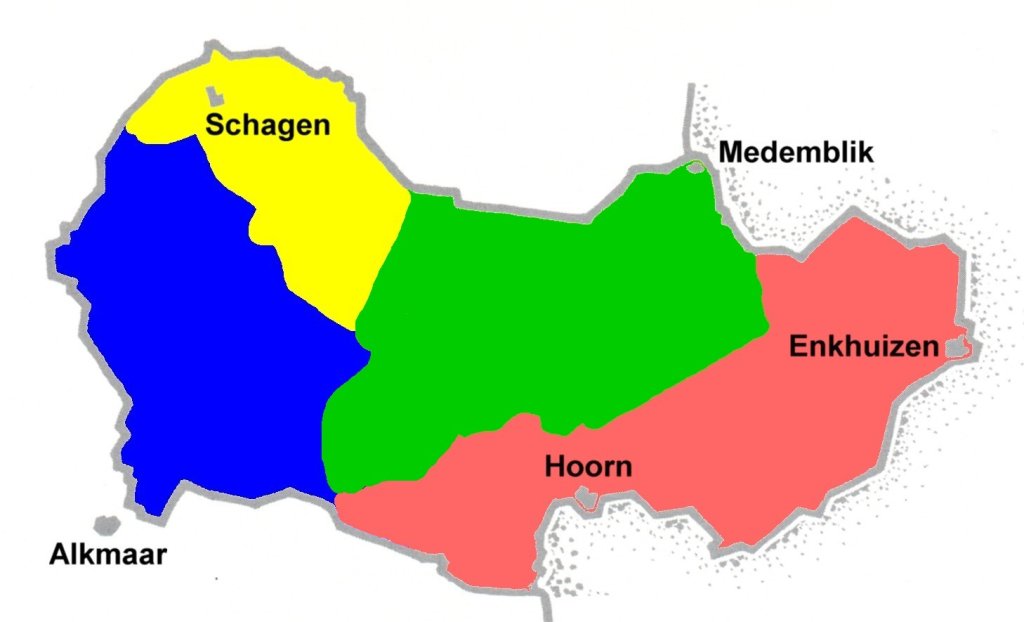
The dike was managed by four water boards: the Vier Noorder Koggen (green), Drechterland (red), the Geestmerambacht (blue) and the Schager- and Niedorper Koggen (yellow). The board, consisting of a dike grave and a couple of heemraden, did an inspection tour of the dike every year. If the dike reeve found maintenance neglected somewhere, he could fine the farmer responsible.
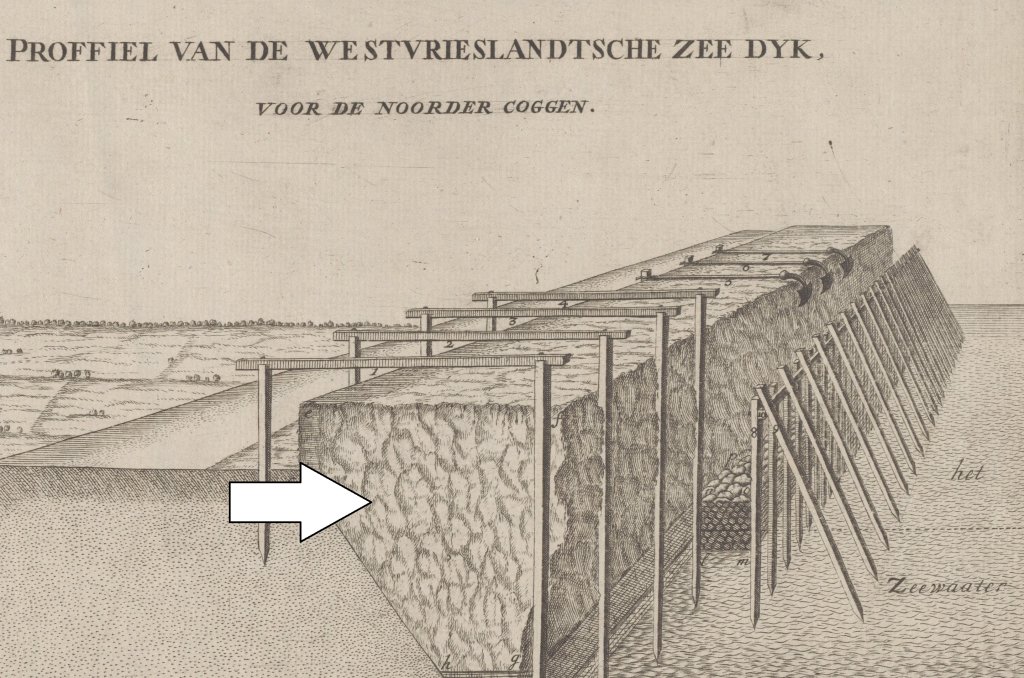
Around 1500, the foreland had become untenable due to ongoing subsidence. It was time for a big, strong dike. In front of the earthen dike body, a pad of seaweed several meters high was placed. This had to absorb the impact of the waves. Seaweed was harvested in the Zuiderzee between West Friesland and the island of Wieringen.
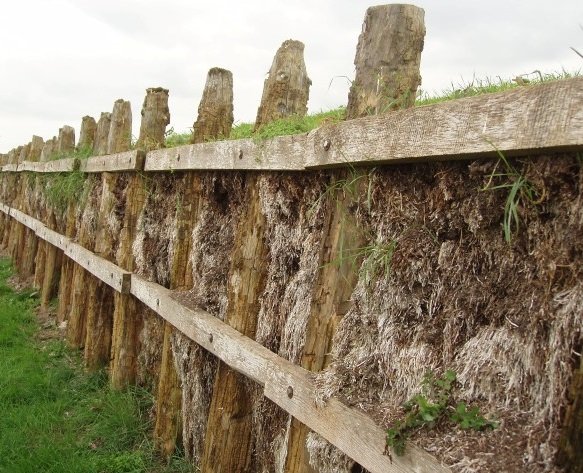
The seaweed package was clamped to the dike body with standing poles and a purlin of wooden beams. The construction was strong, but required a lot of maintenance. The seaweed eventually decayed and the wood rotted. The water boards decided not to leave this targeted maintenance to farmers. The farmer now paid water board taxes so that the water board could hire professional contractors.
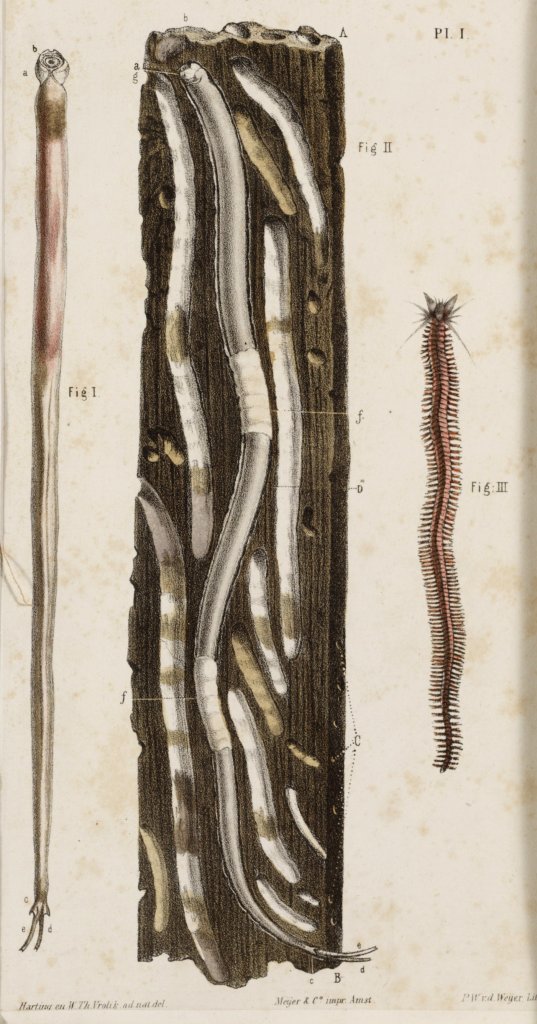
In 1731, the pile worm struck. This mollusk ate holes in the poles that held the seaweed against the dike. On the outside the poles were still pointy, but on the inside they were hollowed out. A storm would be enough to break them like matchsticks.

The water authorities had to intervene. They decided to replace the wood and seaweed with a slope of Drentse or Scandinavian boulders. It was a costly intervention, for which the district water boards went into considerable debt.
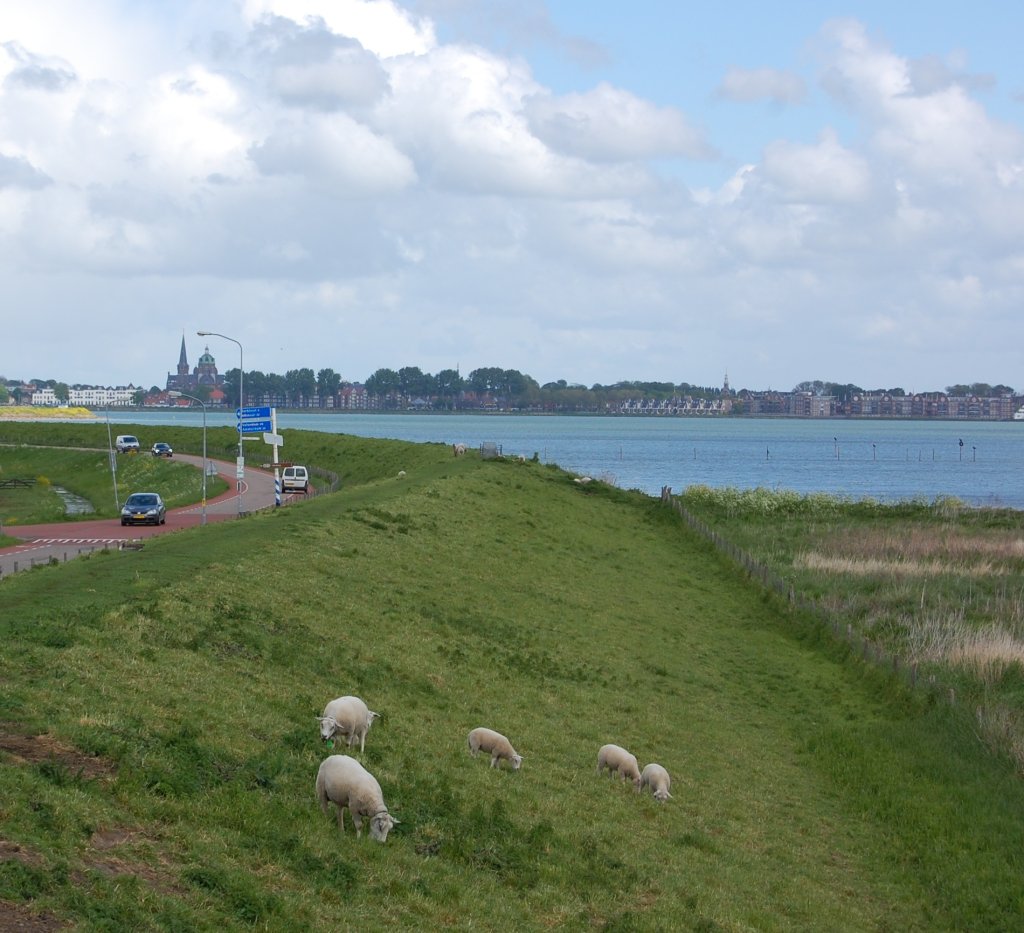
"It has been worked on longer than the pyramids, cathedrals and the Great Wall of China," Johan J. Schilstra (1915-1998) wrote about the Westfriese Omringdijk in the introduction to his book In de ban van de dijk. As a regional historian and member of the Provincial States, Schilstra did his best to bring attention to the dike's rich and valuable past. With success, because in 1983 the dike was declared a provincial monument, the first in North Holland.